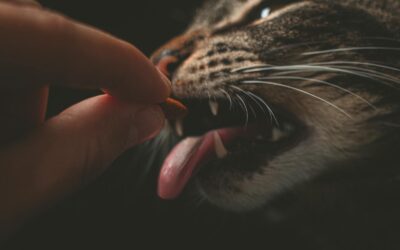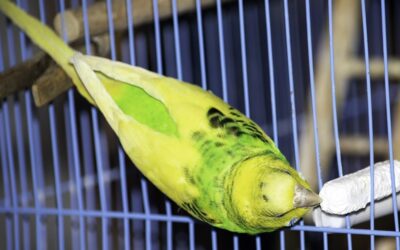Ever thought about small snakes for pets? Here’s all you need to know!
For pet enthusiasts who are curious about exotic pets or want an alternative to the more conventional furry friends, small snakes—often unfairly maligned—are an excellent choice. They require minimal space, can be quite low maintenance, and are endlessly fascinating. But not all snakes are created equal when it comes to life as a household companion. Let’s delve into the world of these captivating reptiles and highlight some of the optimal species for first-time snake owners.
The Appeal of Pet Snakes
While the image of a snake may conjure up fear for some, the reality is that they are gentle creatures who rarely bite except in self-defense and require little social interaction. Their feeding schedule is very infrequent compared to mammals, which could be a refreshing change for pet owners used to daily feedings. Many people enjoy observing the life of a pet snake as it mirrors their ethereal movements in the wild, but with the added pattern of domestic comfort and safety.

Choosing a Small Snake as a Pet
When it comes to selecting a snake, one must consider not only their own comfort level but the space they are willing to dedicate to their new scale-covered companion. Smaller species are a pragmatic option, especially for those living in apartments or with minimal living space. Potentially reaching no more than a few feet long, these fascinating animals can provide years of entertainment and bonding without the burdens that come with larger species.

Key Qualities of Ideal Pet Snakes
To ensure a snake is a good match for their new home and owner, it’s important to consider the following qualities:
-
Size: Smaller snakes take up less space and are more manageable.
-
Temperament: A docile nature is essential, especially for beginners.
-
Dietary Needs: Simple feeding habits make care less complex.
-
Health and Longevity: A robust species with a good life expectancy is preferable.
-
Legal Considerations: Familiarize yourself with local laws regarding keeping snakes as pets.
-
Origin and Housing: Some snakes need different environments and may require more complex housing and heating.

Preparing for a Pet Snake
Bringing a snake into the home is a significant commitment. One must be prepared with the right enclosure, heating elements, and a proper diet.
Setting Up the Terrarium
The snake’s home needs to mimic their natural environment, providing enough space for them to move comfortably, as well as retreat and hide. Substrate, such as aspen shavings for terrestrial species, is necessary, and a secure lid is paramount to both retain heat and prevent escapes.
Kate’s K9 Pet Care provides pet supply delivery for all of your snakes wants and needs!
Creating the Right Environment
Snakes have specific heat and light needs. For example, a basking lamp for diurnal snakes, or an under tank heat mat for others, may be required. Additionally, a portion of the terrarium should be kept cooler to facilitate the snake’s thermoregulation.
Establishing a Feeding Schedule
The beauty of small snakes is their relatively infrequent feeding—once every 5-7 days—consisting of thawed rodents for the vast majority of pet snakes. It’s important to feed them an adequate diet for their age and species to ensure they grow at a healthy rate.

Health and Safety Considerations
Regular check-ups and maintaining a clean environment are crucial for the well-being of the snake. Certain species are more prone to specific health issues, so it’s imperative to do your research and be proactive about potential ailments.
Handling and Hygiene
Snakes should be handled properly, with hygiene and the snake’s comfort in mind. Regular but gentle handling can help acclimate them to human contact, though individual personalities will play a significant role.
Learning the Signs of a Healthy Snake
Understanding what a healthy snake looks and behaves like can alert owners to potential issues early. Observation is key, and any changes in eating habits, energy levels, or skin condition should be investigated.
The Importance of a Reptile Veterinary Relationship
Establishing a relationship with a vet that specializes in reptiles is non-negotiable. Annual visits are wise due to the ‘prey animal mentality’ of hide illness.

Top 10 Small Snakes For Pets
Exotic pets are more popular than ever, and if you’re looking to slither into the world of reptiles, a pet snake can be an intriguing and rewarding choice. For many, the thought of having a snake as a pet may raise concerns about space and safety, but there’s a diverse selection of small snakes that make great companions for beginners and seasoned reptile enthusiasts alike. Below we complied a list of the top 10 small snakes that are manageable, fascinating, and relatively easy to care for, ensuring that your serpentine adventure is a successful one.
1. The Ball Python (Python Regius)
The Ball Python is arguably the reigning champ of snake pets. Docile and non-venomous, they are modest in size, reaching around 3-5 feet at full growth, and are known for their tendency to curl up into a ball when they’re stressed or scared. Originating from sub-Saharan Africa, they sport beautiful patterns and a wide range of colors, making them a hit with snake enthusiasts. Ball Pythons are also generally easy to feed and require a smaller enclosure than most other species.
2. The Kenyan Sand Boa (Gongylophis Colubrinus)
True to its name, the Kenyan Sand Boa hails from East Africa and is perfectly adapted to burrow in the sands of its natural habitat. They have a thick body and grow to only 2-3 feet in length, making them a manageable choice for those with limited space. Known for their tranquil demeanor, Sand Boas are also nocturnal and will typically spend a large part of the day under the substrate.
3. The Rosy Boa (Charina Trivirgata)
With their docile temperaments and striking looks, Rosy Boas are a lovely option for a pet snake. They come in various color patterns and are native to the American Southwest. Growing to around 2-3 feet, they are a hardy species with a life span of 20-30 years, making them a long-term commitment. Rosy Boas are also ground-dwellers, so a wide, shallow tank with plenty of hiding spots works well for them.
4. The Garter Snake (Thamnophis Sirtalis)
Commonly found across North America, Garter Snakes are small, usually ranging from 1-3 feet. They are known for their lively and inquisitive nature. Garter Snakes are not constrictors like most of the snakes on this list, and they eat a varied diet of slugs, earthworms, and small fish. Due to their love of water, a good-sized water dish and some emergent plants can create an ideal enclosure.
5. The Western Hognose Snake (Heterodon Nasicus)
The Western Hognose is known for its distinctive upturned snout and its variety of vibrant colors. They typically reach lengths of 14-24 inches and are native to North America. What sets the Western Hognose apart is its unique defense strategy—when threatened, it will hiss loudly, flatten its neck, and may even play dead. With proper care, these little characters can live for 15-20 years.
6. The Corn Snake (Pantherophis Guttatus)
One of the most popular pet snakes in the United States, the Corn Snake is an ideal choice for beginners. They are gentle and highly adaptable, coming in a multitude of color morphs. Corn Snakes grow to a manageable size of around 3-5 feet and can live for 15-20 years in captivity with the right care. They also have a healthy appetite and are relatively easy to feed.
7. The Rough Green Snake (Opheodrys Aestivus)
Though not for the novice, the Rough Green Snake can be a delightful addition to the home of an experienced reptile keeper. They are slender, arboreal, and docile. Despite their name, these snakes are non-venomous and are insectivores, which means they feed on bugs like crickets and moths. Their shy nature requires a well-planted, vertical terrarium to mimic their natural environment.
8. The Ribbon Snake (Thamnophis Proximus)
Similar in appearance to Garter Snakes, Ribbon Snakes are also found in North America and belong to the same genus. They grow to around 2-3 feet and are characterized by their long, slender body with three distinct, light-colored stripes down their back. They are semi-aquatic and highly active, so a terrarium with both water and land habitats is essential for their well-being.
9. The King Snake (Lampropeltis Getula)
King Snakes are a hardy, medium-sized species, reaching lengths of 3-5 feet. Their name derives from their appetite for other snakes, making them a popular choice for those needing a natural pest control for their reptile collection. King Snakes are generally very docile and adapt well to captivity. However, they are also known escape artists, so a secure enclosure is a must.
10. The Milk Snake (Lampropeltis Triangulum)
Colorful and relatively small, Milk Snakes are another good choice for beginner snake owners. They typically grow to about 2-4 feet in length and require an environment that mimics their natural habitat. Like the King Snake, they have a taste for small reptiles, so they should be kept apart from your other pets. With proper handling, Milk Snakes can become quite tame and are typically easy to care for.
Choosing a pet snake is a substantial commitment, as many species can live for over 20 years in captivity. It’s important to research the specific needs of your chosen species before bringing one home. Always purchase snakes from reputable breeders to ensure the health and proper identification of the species. With a little preparation and dedication, these small snakes can make unique and endearing pets for you to appreciate for years to come

Final Thought: Snakes as Pets, Not Props
While it is intriguing to have a pet so different from the norm, snakes are living beings that deserve the same respect and care as any other pet. Their needs are unique, but with proper preparation, they can make for an endlessly interesting and rewarding addition to the household.







